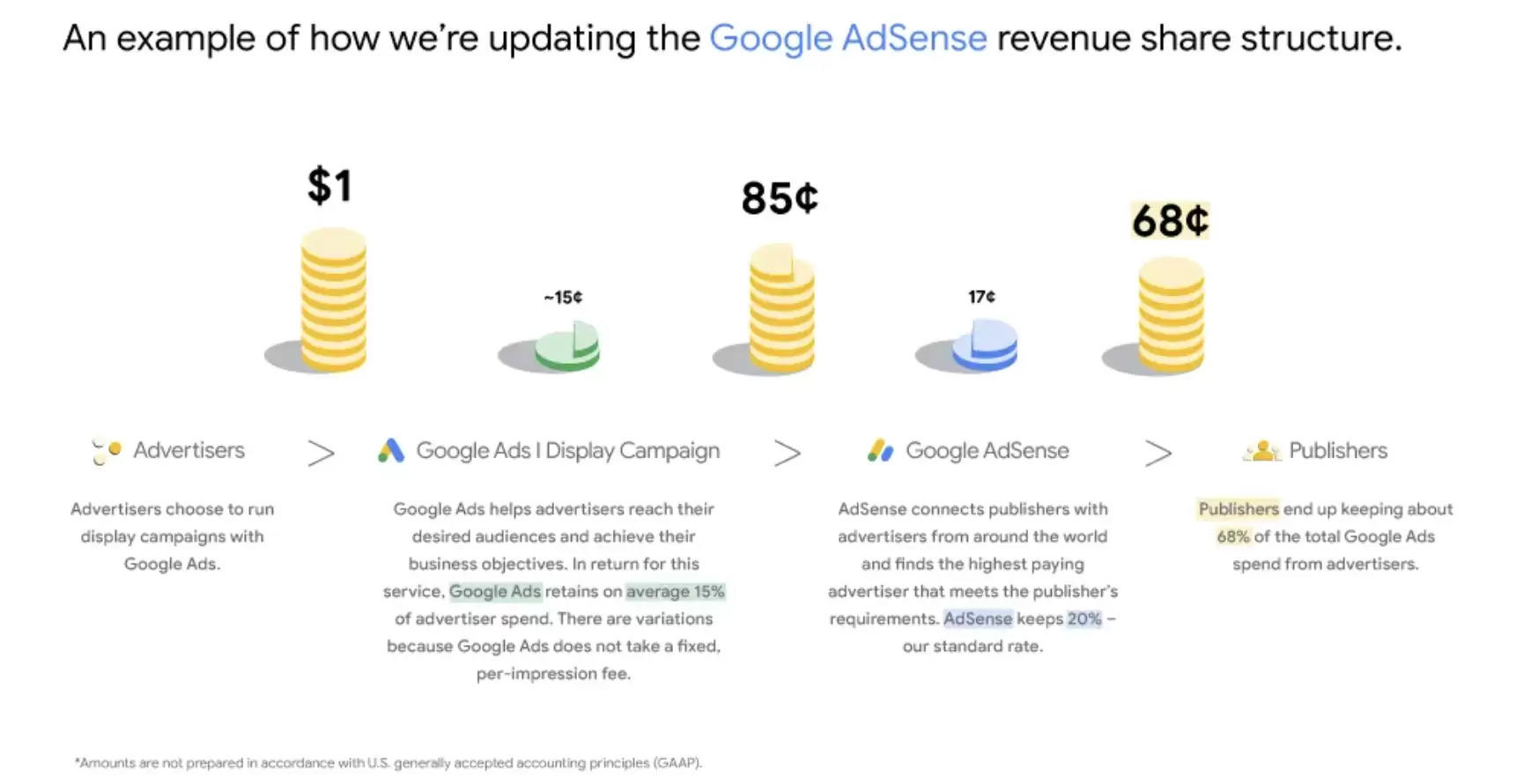Google AdSense Introduces eCPM Payment Model: What Publishers Need to Know

Ginny Marvin, who works as a liaison for Google Ads, says that AdSense has switched to an eCPM payment model. Find out what that means for book companies.
Google changed the way they pay for AdSense so that they are now based on views instead of hits.
There will no longer be a set 68% share for publishers. Instead, they will get 80% of ad income after fees.
To get the most views and money, publishers may need to change their content and SEO tactics.
Google is changing the way authors get paid for AdSense to an eCPM approach.

Google said in November of last year that it would be changing AdSense's income share system to make it more modern. This will change how authors make money from their website content.
The person in charge of Google Ads, Ginny Marvin, has stated that AdSense users will be switching to eCPM payments.
A more in-depth look at the new revenue share
In the past, publishers always got 68% of the money made from ads. Now, the authors and marketers on the "sell side" (the other side of the business) get a different share of the income.
You can find out more about this new layout on Google:
"Publishers will get 80% of the money made from AdSense ads on their content after the advertiser platform takes its cut. This is true whether the advertiser platform is Google's buy-side or a third-party platform."
Google says that when Google Ads buys display ads on AdSense, it keeps about 15% of the money that advertisers spend. Google says that even with these changes, total publication income should stay around 68%.
When third-party sites buy AdSense show ads, the model changes. Once the third party's fees are taken out, producers get 80% of the money. Google says it doesn't have any say over or access to these third-party fees.
Changing to payments for each impression
Google is switching AdSense to a payment plan based on impressions, which is the standard for display advertising in the business. This will make it easier for writers to measure how much money they make on Google goods and other sites.
Google says that this change to the payment plan won't affect the number or types of ads that authors can show as long as they follow the AdSense rules and Better Ads Standards. These rules stop ads that get in the way, like pop-ups or ads that take over the screen.
What Publishers Should Know
Publishers who depend on AdSense for some of their income may be thinking about what these changes will mean for them.
Here are some things to think about.
Know what the Effects Are
The old cost-per-click (CPC) model was different from the new eCPM (effective cost per thousand views) model.
Publishers get paid based on the number of views, not clicks, with eCPM.
Publishers should understand how this new model works because it could affect their income, especially if their content is meant to get a lot of engaged readers rather than a lot of visitors.
Change your SEO and content strategies
Google has said that most authors' earnings will probably stay the same after the switch to eCPM bids.
However, the effect may be different for each person. To make the most money with the new eCPM approach, publishers may need to change their SEO and content strategies.
Some possible tactics are to get more people to visit the website, make user engagement measures better, and keep people on the site longer so that ads get more views.
Following the rules for ads
Since the plan is now based on impressions, authors need to follow AdSense rules and Better Ads Standards even more.
Publishers need to keep giving users a good ad experience by not showing annoying ads. This is very important if you want to keep making money from ads and keep your AdSense account in good shape.
To sum up
Google's updates to AdSense are meant to make the process of making money easier and more clear, but it's up to authors to use these changes to their advantage.
Publishers can continue to do well by staying informed, keeping an eye on success, and changing their tactics as needed.
